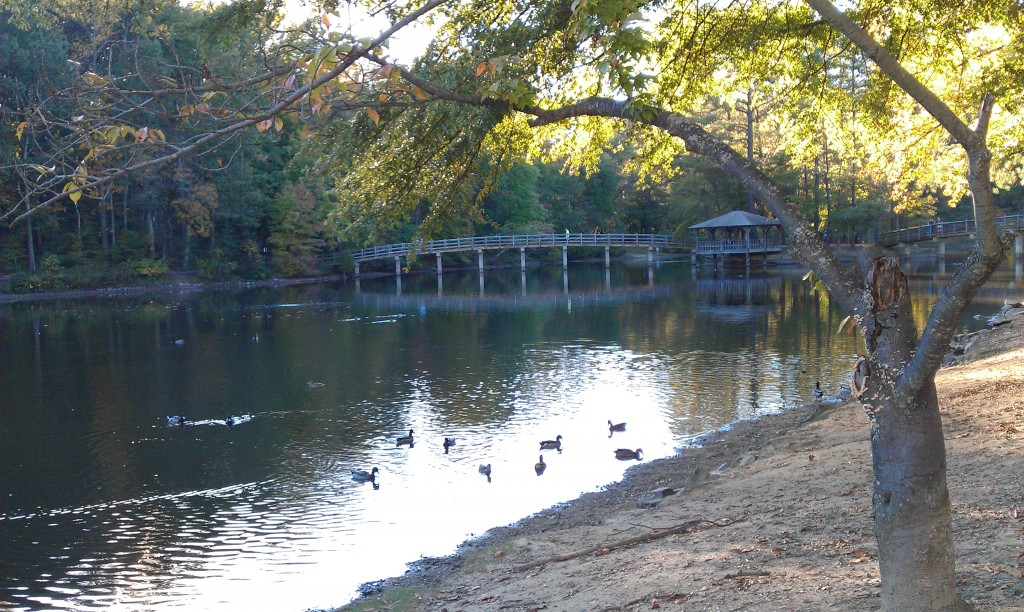I chose the most beautiful day to sit by the lake and observe my surroundings. A light breeze skated over the lake water, slightly disturbing tree branches and surface water. A few trees had changed color and the forest was made up of a mix of red, yellow and green. Red and brown leaves covered the forest floor. People actively wandered around the lake, walking dogs, fishing and playing with their children.
As I slowly approached my reflection spot, my gaze quickly scanned the area. I had chosen my spot by the lake in order to pay closer attention to the evolution of the Westhampton Lake. At my first glance, the lake had no major visual changes. Most trees were still green and the conservation buffer was still nonexistent between myself and the lake. The red and yellow leaves made the scenery more exciting than my last visit. My quick scan of the lake held nothing unexpected considering North America is transitioning into Fall.
After closer observation, I noticed there were less ducks than my last visit and no geese. Most of the remaining ducks congregated on exposed lake bed. The Westhampton Lake had receded far enough for ducks to take temporary residence on the exposed areas. The lake bed lacked vegetation, only covered by sticks and leaves. I assumed the lake would be at a higher level considering the frequent rain. There must be less water in the watershed than normal and the rain has not added enough water to maintain the Lake’s normal water level. The environment surrounding the lake appears largely unaffected by the receding lake.
I would have never given a second though to the exposed lake bed of I had not taken the time to sit and observe. I would have been distracted by the colorful trees as I mosey by the lake. I have learned the value of taking the time to observe and contemplate small changes in the environment.

